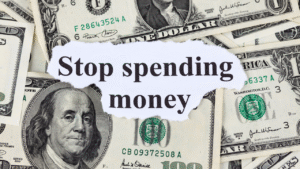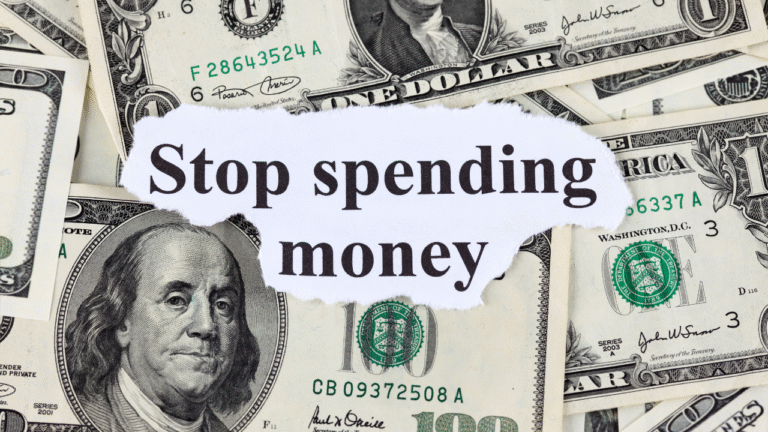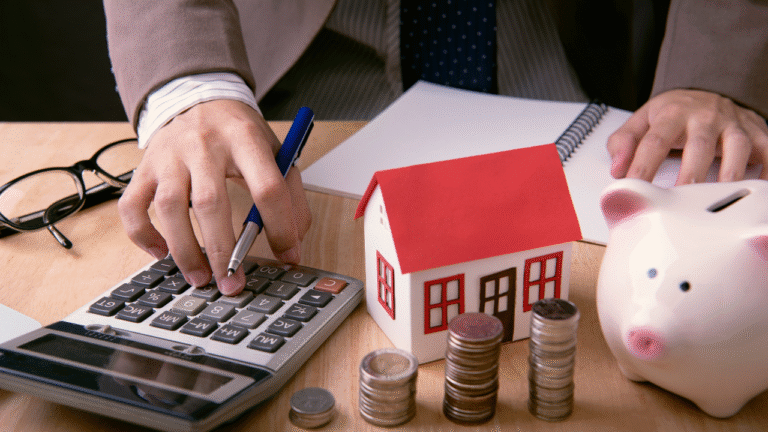Introduction
Living paycheck to paycheck has quietly become the “new normal” for millions of Americans. Recent surveys show that nearly 67% of U.S. households spend their entire paycheck before the next one arrives. That means 2 out of every 3 people you see at work, in the grocery store, or even in your neighborhood are financially vulnerable.
But here’s the truth 👉 living this way doesn’t have to be permanent. With the right habits, tools, and mindset, you can break the paycheck-to-paycheck cycle and move toward true financial freedom.
In this comprehensive guide, we’ll explore:
- Why so many Americans are trapped in this cycle
- The dangers of paycheck-to-paycheck living
- Practical steps to stop living paycheck to paycheck
- Budgeting hacks, savings tools, and smart apps
- Long-term wealth-building strategies
- Real-life examples that prove it’s possible 🚀
Table of Contents
Why 67% of Americans Live Paycheck to Paycheck
According to the LendingClub Paycheck-to-Paycheck Report, nearly two-thirds of U.S. adults say their income is gone by the time their bills are paid.
This problem doesn’t just affect low-income households. Even 44% of six-figure earners admit they live paycheck to paycheck. The key reasons include:
- Rising Costs 📈 – Inflation has pushed food, rent, utilities, and gas to record highs.
- Stagnant Wages 💵 – Worker pay hasn’t kept up with the cost of living.
- Debt Burdens 💳 – Credit cards, auto loans, and student loans drain monthly budgets.
- Lifestyle Creep 🛍️ – Higher income often leads to higher spending instead of saving.
- Lack of Financial Literacy 📚 – Many Americans were never taught budgeting basics.
👉 If you’re in your 20s or 30s, you may already feel this struggle. Be sure to check our guide on Financial Mistakes in Your 20s to avoid traps that fuel this paycheck cycle.
The Hidden Dangers of Living Paycheck to Paycheck ⚠️
Living this way goes beyond day-to-day stress. It exposes you to long-term risks:
- No emergency safety net → a flat tire, medical bill, or job loss can lead to debt.
- Missed payments → late fees, utility shutoffs, and a lower credit score.
- Zero room for saving → retirement planning gets delayed, costing you thousands later.
- Emotional strain → money anxiety is one of the top causes of stress in the U.S.
Imagine this: Sarah, a 29-year-old teacher in Phoenix, earns $4,000/month. Between rent, car payments, groceries, and student loans, her paycheck is gone in two weeks. When her car broke down, she had to put $1,200 on a credit card. With 24% interest, her debt ballooned quickly. This is the cycle so many Americans find themselves trapped in.
Breaking the Cycle: 10 Proven Steps to Stop Living Paycheck to Paycheck ✨
Here are practical, proven steps you can apply immediately:
1. Track Every Dollar 📝
Awareness is power. Start tracking where your money actually goes. Free apps like Mint, Rocket Money, or a simple spreadsheet can reveal hidden leaks.
2. Create a Zero-Based Budget 📊
This method ensures every dollar is assigned a purpose. Example:
- Rent: $1,200
- Food: $400
- Debt repayment: $300
- Savings: $200
- Discretionary: $200
When income minus expenses equals zero, you control your money instead of wondering where it went.
3. Build a Starter Emergency Fund 💰
Set aside $1,000 in a high-yield savings account. This small cushion prevents reliance on credit cards for emergencies.
4. Cut Non-Essential Expenses ✂️
Audit subscriptions, dining out, and impulse purchases. Ask: “Do I really need this?”
5. Pay Off High-Interest Debt First 🔥
Credit card APRs often exceed 20%. Use the avalanche method (pay highest interest first) or the snowball method (pay smallest balance first for motivation).
6. Automate Savings 🏦
Set up an automatic transfer the day you’re paid. Even $50 per paycheck grows over time.
7. Boost Income with a Side Hustle 💼
From freelancing to rideshare driving, even an extra $200/month helps build momentum.
8. Avoid Lifestyle Inflation 🚫
When you get a raise, save or invest the difference instead of upgrading your lifestyle.
9. Try the Cash Envelope System 💳➡️💵
Use physical envelopes for categories like groceries, gas, and entertainment. When cash is gone, spending stops.
10. Stay Consistent 🚀
Consistency beats intensity. Small, steady changes compound into big results.
Budgeting Hacks That Stretch Your Paycheck 📊
These everyday hacks can save hundreds each month:
- Buy groceries in bulk from Costco, Sam’s Club, or Walmart
- Meal prep at home instead of dining out
- Use cashback apps like Rakuten or Ibotta
- Call providers to negotiate bills (cell phone, internet, insurance)
- Switch to generic or store-brand items
- Set a 24-hour rule before making non-essential purchases
Tools & Apps That Make Saving Easy 🛠️
- YNAB (You Need a Budget) → hands-on budgeting tool
- Mint → free app for tracking expenses
- Acorns → invests spare change automatically
- Rocket Money → cancels unwanted subscriptions
- Goodbudget → digital envelope system
Each app can give you structure, reminders, and automation so you stay on track.
Long-Term Strategies for True Financial Freedom 🌟
Escaping the paycheck-to-paycheck trap isn’t just about short-term fixes. Here’s how to build lasting wealth:
- Invest in Retirement Accounts
Contribute to a 401(k) or IRA. Even $200/month at age 25 can grow into $500,000+ by retirement. - Improve Your Credit Score
Pay bills on time, reduce credit usage, and avoid unnecessary hard inquiries. A higher score = lower interest rates. - Build Multiple Streams of Income
Investments, side hustles, and rental income provide safety beyond a single paycheck. - Save 3–6 Months of Expenses
This “big” emergency fund covers job loss or medical emergencies. - Adopt a Wealth Mindset
Shift from “survival” to “growth.” Ask: “How can I make my money work for me?”
Case Study: How Mark Broke the Cycle 🎯
Mark, a 35-year-old IT consultant from Chicago, was earning $90,000/year but still broke by payday. His turning point came when he:
- Tracked every expense with Mint
- Cut cable, saving $120/month
- Picked up a weekend freelance gig ($400/month)
- Directed all extra money toward debt repayment
Within 14 months, Mark had eliminated $12,000 in credit card debt and built a $5,000 emergency fund. Today, he invests 15% of his income in retirement accounts.
This shows that breaking the cycle isn’t about earning more alone — it’s about changing money habits.
Paycheck-to-Paycheck FAQ ❓
Q1. Why do so many Americans live paycheck to paycheck?
Millions struggle because wages haven’t kept up with inflation, housing costs, and rising debt. Even higher earners can fall into the cycle due to lifestyle inflation and lack of savings habits.
Q2. How can I stop living paycheck to paycheck on a low income?
Start small: track every expense, cut non-essentials, and save even $25 per paycheck. Building a mini emergency fund ($500–$1,000) helps avoid debt and creates breathing room.
Q3. What’s the first step to breaking the paycheck-to-paycheck cycle?
The fastest step is to create a budget and identify “money leaks.” Once you know where your money goes, you can redirect it toward savings and debt repayment.
Q4. Can people earning over $100K still live paycheck to paycheck?
Yes. Studies show nearly half of six-figure earners still struggle due to overspending, high housing costs, or debt. Income doesn’t guarantee financial security — habits do.
Q5. How much should I save from each paycheck to build security?
Aim for at least 20% of your income, but if that’s not realistic, start with 5–10% and increase over time. Even small consistent savings add up and help break the cycle.
Final Thoughts: Break Free Today 🚀
Living paycheck to paycheck doesn’t have to define your future. By tracking spending, building savings, and creating new habits, you can escape the cycle and achieve financial independence.
👉 Remember:
- Start small (even $25/week makes a difference)
- Stay consistent
- Celebrate progress, not perfection
Financial freedom isn’t about luck — it’s about strategy, discipline, and daily choices. 🌟
So the next time you look at your paycheck, think: “How can I make this work for me, not against me?”










